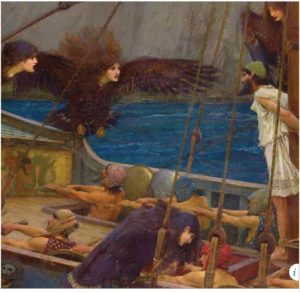A New Odyssey for the Ages
Humanities magazine, a publication of the National Endowment for the Humanities, Winter 2019
by Xiaxun Ding
*****
Rosy-fingered dawn caresses the skies of Baltimore.

Aeolus has replaced his gusty winds, which swept the city the night before, with calm breezes. As the late October sun rises, trees slip on a subtly darker shade of yellow. It is the season of nostalgia. Inside a classroom at Bard High School Early College Baltimore, students consider the word’s etymological ancestor, nostos, meaning “homecoming,” and, specifically, Odysseus’s homecoming.
Nearly three millennia after its appearance in the eighth century BCE, Homer’s Odyssey continues to grip its readers, evoking feelings of longing and belonging, and probing questions about honor, identity, and transformation. What stands out as unfamiliar in this class, however, is that students are using a new edition with a Minoan fresco on its cover. This is Emily Wilson’s translation, the first English rendition by a woman. Lucidity, vigor, vitality, sensitivity, contemporaneity—these are all qualities that reviewers attribute to this version by Wilson, who is a professor of classical studies at the University of Pennsylvania. The same qualities inspired Amy Bernstein, a Baltimore-based writer and playwright, to bring the hardcover edition into classrooms for students to “really dig deep and discover their own creative ideas and energies.”
What materialized is the Maryland Odyssey Pilot Project and Symposium, supported by a Maryland Humanities grant. Throughout the fall semester, students in grades 9 through 11 at four Maryland high schools read Wilson’s translation and interacted with the poem through analytic and creative works, including poetry, drama, dance, music, and visual arts.
Read the full article here.

